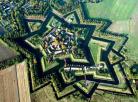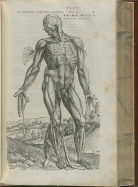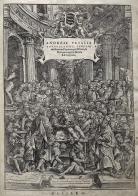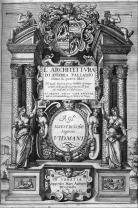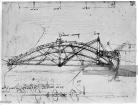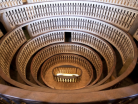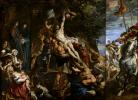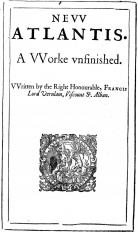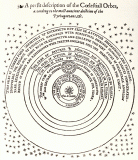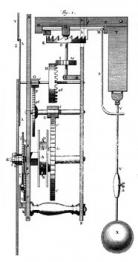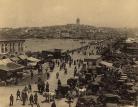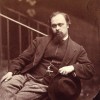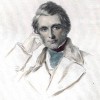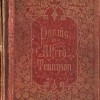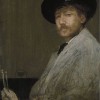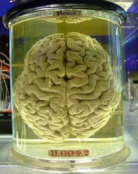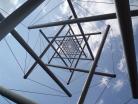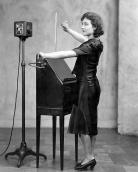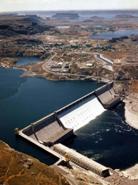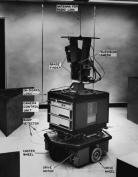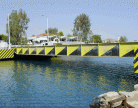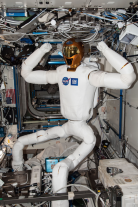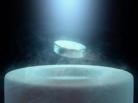Purdue Honors College Leonardo da Vinci Timeline
Created by Dino Franco Felluga on Thu, 01/25/2018 - 15:48
Part of Group:
This timeline, tied to HONR 299: Leonardo da Vinci at Purdue University, explores various aspects of Leonardo's career, as well as the transition from the medieval period to the Renaissance (and beyond).
Timeline
Chronological table
| Date | Event | Created by | Associated Places | |
|---|---|---|---|---|
| circa. 1530 |
The Development of the Bastion "Star Fort"With the new and "booming" age of gunpowder, traditional fortress designs were rendered useless and indefensible. Modern cannons could easily destroy walls that were previously thought to be impenetrable. Famed Italian political scientist Machiavelli is quoted as saying, "There is no wall, whatever its thickness, that artillery will not destroy in only a few days." However, in the mid 1500s, circa 1530, Michelangelo designed a revolutionary type of fortress that could withstand heavy fire from cannons and bombards. His design involved round or square shaped walls that came together at multiple diamond shaped points. Surrounding the fortress were ditches and walls designed to curtail enemy troops into specific regions along the fortress where they were most vulnerable and easily killed. Glacis, or artificial slopes in the land, were also installed to prevent cannon shots at the lower regions of the wall and keep heavy artillery at bay. Unlike previous forts, the star fort eliminated "dead zones" that were sheltered from defensive fire at the rounded pillars at the corners. The star shape eliminated all dead zones by exposing the enemy to fire from all sides. The new fort style required a much larger army to defend, but also required a much larger army to capture. The star fort design would leave Italy and become the preferred fort design for countries around the world. Thanks to its ingenious engineering, well designed geometry, and sturdy construction, the star fort would prove to be an effective defense against the ever-evolving cannons and artillery of the 1500s. Sources: Image Source: https://en.wikipedia.org/wiki/Bastion_fort#/media/File:Fortbourtange.jpg Sparavigna, Amelia Carolina. “An Example of Military Engineering in 16th Century: The Star Fort of Turin.” International Journal of Sciences, vol. 1, no. 12, 2015, pp. 62–67., doi:10.18483/ijsci.880. “Bastion fort.” Wikipedia, Wikimedia Foundation, 23 Feb. 2018, en.wikipedia.org/wiki/Bastion_fort. International, American. “Types of Castle and The History of Castles.” Types and History of Castles - Star Forts, www.castlesandmanorhouses.com/types_10_star.htm.
|
Steven Mazzochi | ||
| 1543 |
De humani corporis fabrica, Andreas Vesalius
Latin for “On the fabric of the human body,” De humani corporis fabrica is a set of seven books on human anatomy published by Andreas Vesalius. Each book in the collection is separated in to specific body systems, such as “Bones and Cartilages” and “Ligaments and Muscles,” and are meant as a guide to Vesalius’ lecture series. Working in tandem with various Renaissance artists from the “studio of Titian,” Vesalius’ collection is considered the first major work of modern anatomy, replacing the old Galen dominated school of thought. The drawings are exceptionally detailed, and focus on the procedural steps in dissection. Due to the widespread use of the printing press, a condense version of De humani corporis fabrica was released to the general public and gained widespread popularity. Source:
Bambach, Carmen. “Anatomy in the Renaissance”. Heilbrunn Timeline of Art History. Metropolitan Museum of Art, Oct., 2002. Web. 15 Feb., 2018. Link Wikipedia. "De humani corporis fabrica." Wikipedia, 15 Feb. 2018. Web. 15 Feb. 2018. Link Image Source: Image courtesy of Historical Anatomies of the Web page 181, retrieved online. |
Thomas Knowles | ||
| 1543 |
Vesalius publishes his anatomical treatisesBecause da Vinci failed to publish his anatomical notes to the public himself, the next time the information was seen was in influencing Andreas Vesalius's De humani corporis fabrica libri septem, a collection of books that went over human anatomy in a similar level of detail to da Vinci's notes. Like da Vinci, Vesalius personally dissected human corpses in an effort to provide the most immediate and accurate description of the human body possible; also like da Vinci, he took advantage of recent advance in printmaking technology to widely disseminate drawings more accurate than any available at the time - technology which relied heavily, in turn on some of Leonardo's advances during the Rennaissance, including his style of careful realistic sketching. Prior to Vesalius, dissections were generally done by a second person under the direction of the doctor giving the lecture; thus, this publication was unmatched in the fidelity and detail of its descriptions. It was Vesalius's publication that finally disproved Galen's theories, making widely-known some discoveries that da Vinci had found nearly a generation prior (such as the heart's place at the center of a complete circulatory system, the lack of any anatomical evidence for Hippocratic humoral theory, and discrepancies caused by Galen's use of animal specimens). Sources: Image source: https://en.wikipedia.org/wiki/File:Vesalius_Fabrica_fronticepiece.jpg |
Shelly Tan | ||
| 1546 |
The Establishment of the Royal NavyCannons had been used on European ships as early as 1338 during the Hundred Years' War, however the technology was still developing and the full might of naval firepower had not yet been realized. During the middle ages, England did not keep a standing peacetime Navy, nor did many other European countries. In 1546, King Henry VIII of England established the first standing Royal Navy, along with multiple dockyards. During his reign, King Henry would build the armada to more than 40 ships, each equipped with superior firepower. The Royal Navy's warships carried 20 heavy and 60 light cannons per ship, the first being the famed flagship, the "Mary Rose." A significant advantage of the Royal Navy was their newly developed breech loading iron cannons, mixed with new cast bronze cannons. These new and incredibly powerful warships were capable of delivering tremendous damage through broadsiding, meaning all the guns on one side of the ship could be fired at once, with a maximum fire rate of 2-3 times in 5 minutes. The British also developed a variety of different projectiles to fire, including the roundshot, the canister shot, and the grapeshot, each of which dealt different levels of damage. Even powerful naval challengers such as the Spanish, who also developed a sizeable navy, would be defeated by the might of the British guns. The Royal Navy's advanced engineering and superior ships would help England become the dominant world superpower from the 16th century to the 20th century. The might of British warships was surpassed only by the United States during the second world war. Sources: “Royal Navy.” Wikipedia, Wikimedia Foundation, 19 Feb. 2018, en.wikipedia.org/wiki/Royal_Navy#Role. “English cannon.” Wikipedia, Wikimedia Foundation, 18 Feb. 2018, en.wikipedia.org/wiki/English_cannon. “Royal Navy History.” History | Royal Navy, www.royalnavy.mod.uk/news-and-latest-activity/features/history-timeline. “Naval artillery.” Wikipedia, Wikimedia Foundation, 17 Feb. 2018, en.wikipedia.org/wiki/Naval_artillery#Origins. Image Source: John Cleveley the Elder [Public domain], via Wikimedia Commons |
Steven Mazzochi | ||
| 1570 |
Palladio's I quattro libri dell'architetturaAndrea Palladio's I quattro libri dell'architettura was published in 1570 and has since been translated into several Western languages. Known in English as Four Books on Architecture, the work summarized Palladio's studies of classical Roman architecture. The books contained nine sets of architectural rules as well as many of Palladio's designs which he synthesized from his study of Roman ruins, works of previous writers such as Vitruvius, and discussions with other Renaissance architects. Some of his designs featured in the treatises were actually constructed while others were merely theorized. His work sparked the architectural movement of Palladian architecture that is based on symmetry, perspective, and other mathematical principles. Sources: Center for Palladian Studies in America. “Palladio and His Books.” Center for Palladian Studies in America, www.palladiancenter.org/palladiobooks.html. Heyman, Jacques. “Palladio's Wooden Bridges.” Architectural Research Quarterly, vol. 4, no. 1, 2000, pp. 81–86. Image Source: By Anonymous (Unknown) [Public domain], via Wikimedia Commons |
Emily Maneke | ||
| circa. 1580 |
Da Vinci's Revolving BridgeWhile Da Vinci was a masterful artisan, he was also often employed as a military engineer. The revolving bridge was developed for quickly and moving troops across bodies of water that they might encounter in their path. This self-supporting bridge was light enough to be carried in pieces by soldiers and could be constructed without the need for any nails. The structure of the bridge was made of a rope and pulley system to allow it to rotate around a pylon on the shore to reach out across a river. While this invention didn't directly increase the military prowess of the armies that used it, it allowed troops to get from one place to another far faster than having to always go around large bodies of water. Source: “What Is Leonardo's Revolving Bridge Invention?” Innovateus.net, www.innovateus.net/innopedia/what-leonardos-revolving-bridge-invention. “Leonardo Da Vinci's Self Supporting Bridge.” Go Back to the Front Page, www.leonardodavincisinventions.com/leonardo-da-vinci-models/leonardo-da-.... Mahmoud, K.M. “Recent Developments In Bridge Engineering.” Google Books, books.google.com/books?id=7t3rGrDxA3oC&pg=PA85&lpg=PA85&dq=leonardo%2Bda%2Bvinci%2Bmovable%2Bbridge&source=bl&ots=rYjhsSuc1W&sig=xAYmz6N1i1X3ntSKlmTG9Y5Zqw8&hl=en&sa=X&ved=0ahUKEwjl_8irm8zZAhUJ7awKHQ5ABT44ChDoAQg0MAI#v=onepage&q=leonardo%20da%20vinci%20movable%20bridge&f=false. Image: Getty Images, https://www.gettyimages.com/detail/news-photo/design-for-a-parabolic-swi... |
Scott Lenz | ||
| Oct 1582 |
Gregorian Calendar
The most common calendar in the world, the Gregorian Calendar, was introduced in 1582 in Catholic Europe by Pope Gregory XIII to replace the Julian calendar, which did not align exactly with the solar year and caused holidays to not fall in alignment with astronomical events or seasons. The calendar consists of 365 days broken up into 12 months of 28, 30, or 31 days, excepting leap years in which an extra day is added to make 366. The main goal of this calendar was to realign religious holidays with equinoxes and solstices. To accomplish this, the system of leap years was changed from every four years to slightly less than that, with the leap year being omitted every turn of a century, unless the year is divisible by 400. Additionally, the calendar has a more accurate way of calculating the date of Easter each year. In order to transition to the new system and line it up with the Earth, 10 days in October 1582 were not observed. Protestant countries were worried the new system was a scheme of the Catholic church to silence them, and so abstained from the change until 200 years later in 1752, when they joined the Catholic countries on the new calendar. Although the Pope enforced the new calendar, it was actually designed by Luigi Lilio, an Italian doctor, astronomer and philosopher. This calendar is accurate to one day every 3236 years, one of the best attempts humanity has made at a perfectly accurate calendar. Source: “The Gregorian Calendar.” 2018. https://www.timeanddate.com/calendar/gregorian-calendar.html. Accessed 7 Mar 2018. Image: Wikipedia Commons, public domain. https://commons.wikimedia.org/wiki/Gregorian_calendar |
Derek Jones | ||
| 1594 |
First Anatomical Theatre, Padua
Implemented by the University of Padua, the first anatomical theatre was built as both a teaching tool and a gathering place to discuss medical science. The design, based on a traditional amphitheater, included a center table for cadaver work surrounded by elevated rows of seats and railings for observers to gain a clear view of the dissection. Typically, skeletons from previous dissections were including in a viewing, along with instructional banners. A chief surgeon leading the meeting normally didn’t perform the actualcutting, as hired dissectors or students would follow his instructions during the viewing. Due to the large seating capacity, viewing of dissections became popular, spurring the construction of similar theatres accross Northern Italy and making the region the center of anatomical research decades. Over the course of the next few centuries, anatomical theatres following a similar design were built across Europe.
Source:
Klestinec, Cynthia. “A History of Anatomy Theatres in Sixteenth-Century Padua.” Journal of History of Medicine and Allied Sciences. US National Library of Medicine, July, 2004. Web. 15 Feb. 2018. Link
Image Source: Image is courtesy of VenetoInside.com. Image can be found on the website |
Thomas Knowles | ||
| 1600 |
Architecture and Acoustics in VeniceWith the introduction of Polyphonic music in Venice, the 16th century sought to better the acoustics of the church through modifications in the architecture of various churches in Venice. With special regard to Basilica of San Marco, there was the seating for the doge of Venice. During the introduction of polyphonic music, the acoustics was said to be terrible however through the introduction of modifications built by architect Jacopo Sansovino in the 16th century by decreasing the reverberation time, increased the quality of sound to modern concert seating for the doge of Venice. These modifications are remarkable to witness especially because the introduction of polyphonic music was still quite new and the nonexistence of current technology. Sources:- Boren, Braxton B., and Malcolm S. Longair. “Acoustic simulation of renaissance Venetian churches.” The Journal of the Acoustical Society of America, vol. 130, no. 4, 2011, pp. 2318–2318., Kim Krieger. “Venetian Acoustics Rediscovered.” Science | AAAS, 11 Nov. 2011, www.sciencemag.org/news/2011/11/venetian-acoustics-rediscovered. Image Courtesy:- Wikimedia Commons , public domain https://commons.wikimedia.org/wiki/File:Basilica-di-San-Marco-Venice-20050524-029.jpg |
Yamuna Ambalavanan | ||
| circa. 1610 |
The Elevation of the CrossThe artistic principles established in Renaissance art helped to guide artists for centuries after. The renaissance introduced the idea of secular subject matter, a focus on naturalism, and the representation of emotion in subjects. The baroque period that directly followed the Renaissance used these principles and pushed them even further. These artists focused on using vibrant colors and extreme lights and darks to create dramatic and dynamic works of art. The baroque artists rejected the tranquil expressions found in renaissance art and instead chose to imbue as much emotion in their subjects as possible. In this way the movement, emotion, and extravagance that characterizes baroque art sets it apart from the comparatively simple Renaissance art. The Elevation of the Cross by Peter Paul Rubens is an excellent example of how Baroque art differs from Renaissance art. Every panel of this triptych is packed with action, with the diagonal composition ultimately drawing the viewers eye to the drama of Christ on the cross being hoisted up. This piece evokes a visceral reaction in the viewer by taking the emotional principles established in the Renaissance and pushing them to the extreme.
Sources Camara, Esperanca. “Baroque Art in Europe, an Introduction.” Khan Academy, 2018, www.khanacademy.org/humanities/monarchy-enlightenment/baroque-art1/beginners-gui de-baroque1/a/baroque-art-in-europe-an-introduction. Stokstad, Marilyn, and Michael W. Cothren. Art History. Upper Saddle River, NJ: Pearson/Prentice Hall, 2011. Print.
Image Retrieved from Wikimedia Commons, fair use |
Lauren Krieger | ||
| 1627 |
New AtlantisNew Atlantis is an incomplete utopian novel written by Sir Francis Bacon, a late renaissance writer, scholar, and statesman. It was published in 1627. The book is based upon the allegorical Atlantis in Plato's works Timaeus and Critias. New Atlantis is one of many books inspired by Plato's Atlantis story, including Utopia by Thomas More, who coined the word utopia. New Atlantis is representative of the ideas of utopia that were under discussion throughout Europe during the Renaissance. This discussion was fueled by the revival of Ancient Greek and Roman traditions of desiring to create the perfect society. Sources: “New Atlantis.” Wikipedia, Wikimedia Foundation, 28 Feb. 2018, en.wikipedia.org/wiki/New_Atlantis. "The Utopian Impulse." Sterling Memorial Library, Yale University, 8 June. 2009, http://www.library.yale.edu/exhibitions/ideal/images/utopian_impulse.pdf. Image Source: Classic Literature, http://classic-literature.co.uk/francis-bacon-the-new-atlantis/francis-b... |
Laila Kassar | ||
| circa. 1650 |
Tycho and GalileoAfter Copernicus had concluded that the sun was the center of the universe and that all other planets had an orbit around the sun, there was immense controversy. Many people had a hard time accepting the new Copernican system because it rejected the notions of the Ptolemaic system and even clashed with the conventions of the bible. The bible declines the idea of a stationary sun and a moving earth, and many Catholics and Protestants quickly rejected the idea. People such as Martin Luther openly dismissed the notion in one of his “table talks” in 1593. In light of this conflict Tycho Brahe created a new, hybrid model, a geostatic heliocentric model. In this system, the moon and the sun have an orbit around the earth and the other planets have an orbit around the sun. This accounted for Copernicus’ correct prediction of the movement of the planets but worked with the solidity of a stationary earth so that Aristotelian physics could be maintained. Many people adopted the new Tychonic cosmology, but Galileo Galilei changed all that. After Galileo’s invention of the telescope, the Tychonic system validity was questioned. He boldly questioned the new system and even called into question the bible’s knowledge on astronomy when he stated that the bible is written in the language of the common person, not in the language of an expert in astronomy. Galileo’s statements and arguments undermined the physics and astronomy of Aristotle and those before him. Galileo’s telescopic observations did not prove, nor disprove that the sun is the center of the universe, but it did add to his validity and urged people to consider the points he was sharing. Soon after, the heliocentric system was widely accepted.
Sources: "The Galileo Project." Rice University. http://galileo.rice.edu/sci/theories/copernican_system.html. Accessed 28 Feb. 2018. Image source: Rice University. Public domain. http://galileo.rice.edu/sci/theories/copernican_system.html. |
Rachel Lee | ||
| 1656 |
Pendulum ClockThe first pendulum clock was invented in 1656 by a Dutch scientist named Christian Huygens. He allegedly spent all of Christmas day in the Hague constructing his model. Although Galileo Galilei is often credited with studying and inventing the pendulum in the late 16th century, his clock designs were never built. Although the pendulum clock was invented in the Netherlands, it became most prevalent among English clockmakers. By 1671 the “grandfather clock” design we know today was becoming widespread in England and later the rest of Europe. Around this time, a man named William Clement created a new mechanism, the anchor escapement, as well as the pendulum suspension spring. These further increased the accuracy of pendulum clocks. At this point, pendulum clocks could be accurate to less than 10 seconds a day, which was orders of magnitude more accurate than previous clock designs. Because of this newfound accuracy, London clockmaker Daniel Quare added minute and second hands to the clock, allowing time to be read more accurately than ever before. This type of clock dominated timekeeping for centuries, until the electric clock became prevalent in the 19th century.
Sources: “Accurate Mechanical Clocks.” The History of Mechanical Pendulum Clocks and Quartz Clocks. 7 April 2017. https://www.thoughtco.com/history-of-mechanical-pendulum-clocks-4078405. Accessed 8 Mar 2018. Gascoigne, Bamber. “History of Clocks.” HistoryWorld. From 2001, ongoing. http://www.historyworld.net/wrldhis/PlainTextHistories.asp?groupid=1244&HistoryID=ac08>rack=pthc. Accessed 8 Mar 2018. Image: Wikipedia Commons, public domain. https://commons.wikimedia.org/wiki/File:Early_Pendulum_Clock_Christian_H... |
Derek Jones | ||
| 1794 |
The First Bearing Patent and Modern BearingsA welsh inventor, Philip Vaughan, was the first person to patent ball bearings in 1794, almost 300 years after da Vinci’s notebooks discussed practically identical designs. Vaughan’s design was specifically purposed for reducing friction between the axle and wheel of a carriage. It was then another 100 years before Henry Timken patented tapered roller bearings and founded Timken Roller Bearing Company, which remains the elite standard for bearing manufacturing today. It is unfortunate that the culture in which da Vinci was inventing did not enable inventors to stake claim on their work as patents do today. Present-day industry recognizes inventors such as Vaughan and Timken as the fathers of bearings, when in fact it was Leonardo da Vinci who hundreds of years earlier documented his observations and improved upon the rudimentary designs of the ancient world. Much of the fame given to Vaughan and Timken comes from their ability to build on da Vinci’s works and implement immediately usable mechanical solutions in the height of the industrial revolution. Da Vinci’s designs while innovative, were not fully realizable given the technologies available to him in the late 15th century. However, his proposed uses such as his flying machine was only able to be envision with knowledge of bearing use and design. Even today, 500+ years after da Vinci’s work, tribology (the study of friction, wear, lubrication and bearing design) remains a billion dollar industry where many scientists and engineers work to continue to make improvements to bearing design. The persistence of the importance of bearings in machine design speaks to the genius of da Vinci to have theorized and exampled such work much earlier in history. Sources: “Timken Company.” Wikipedia, 23 Feb. 2018. Wikipedia, https://en.wikipedia.org/w/index.php?title=Timken_Company&oldid=827283421.
“Philip Vaughan.” Wikipedia, 4 July 2017. Wikipedia, https://en.wikipedia.org/w/index.php?title=Philip_Vaughan&oldid=788888687.
|
Katelyn Polson | ||
| Jan 1810 |
Zur Farbenlehre
ArticlesRelated ArticlesLinda M. Shires, "On Color Theory, 1835: George Field’s Chromatography" |
Dave Rettenmaier | ||
| 1814 |
The Lowell Textile MillsThe true realization of Leonardo’s dreams for water power, would not come about on a grand scale until the industrial revolution. By then, the practical, secular, scientific worldview of the renaissance had permeated deep into society, the commerce and trade of the Italian states had turned into true capitalism. Watermills then, began to be used to power the booming textile industry. While mills had been used for more than simply grinding grain before, it had never been done on this scale. In 1814, Francis Lowell constructed a textile factory to be powered by the Charles river in Massachusetts. This was one of the first truly industrial factories to be built in the US and water was the driving force for the industry. Later in the 1840s, Lowell constructed a series of dams and channels to strengthen the flow of the river, providing yet more power to the mills. The sort of projects that Leonardo had laid the theoretical groundwork for, at the River Arno were now being put into action. http://ocp.hul.harvard.edu/ww/mills.html Picture by Sidney and Neff retrieved from Wikimedia Commons, public domain |
Ian Campbell | ||
| Jan 1840 |
Zur Farbenlehre translated
ArticlesRelated ArticlesLinda M. Shires, "On Color Theory, 1835: George Field’s Chromatography" |
Dave Rettenmaier | ||
| 1845 to 1863 |
The First Galata BridgeCurrently on its fifth rendition, the first Galata Bridge on the mouth of the Golden Horn was constructed in 1845. Also known as Cisr-i Cedid (New Bridge) to distinguish it from a 19th century bridge built atop pontoons farther upstream, the bridge was made of wood and supported by several piers that extended into the river. In addition to traversing the Golden Horn, the bridge served as a symbolic link between the two cultures of traditional, secular Istanbul and foreign, non-Muslim Galata. Sources: “Kara-Keui (Galata) Bridge, Constantinople, Turkey.” World Digital Library, Library of Congress, 8 Jan. 2018, www.wdl.org/en/item/8820/. New Galata Bridge Artisans Institution. “History of Bridge.” Galata Porusu Restoranlar, New Galata Bridge Artisans Institution, www.galatakoprusu.org.tr/en/history-of-bridge/. Image Source: PD ("No known restrictions on publication."), via Wikimedia Commons |
Emily Maneke | ||
| Sep 1848 |
Pre-Raphaelite Brotherhood founded
Related ArticlesElizabeth Helsinger, “Lyric Poetry and the Event of Poems, 1870″ Morna O’Neill, “On Walter Crane and the Aims of Decorative Art” Linda M. Shires, "On Color Theory, 1835: George Field’s Chromatography" |
Dave Rettenmaier |
|
|
| 1 Jan 1853 |
Stones of Venice, vol. 2
ArticlesAmy Woodson-Boulton, “The City Art Museum Movement and the Social Role of Art” Related Articles |
Dave Rettenmaier | ||
| 1 Jan 1856 |
Modern Painters, vol. 3
ArticlesAmy Woodson-Boulton, “The City Art Museum Movement and the Social Role of Art” Related Articles |
Dave Rettenmaier | ||
| May 1857 |
"Moxon Tennyson" published
Articles |
Dave Rettenmaier | ||
| May 1877 |
Grosvenor Gallery inaugural exhibition
Articles |
Dave Rettenmaier | ||
| 1878 |
Early HydroelectricityThe advent of electricity largely brought to an end the era of water turbines powering textile mills by means of belts. Electricity enabled large factories to operate even in areas away from water. But this was by no means the end of water power. Instead water turbines where hooked up to generators rather than belts, and would become a major source of electricity in some regions. 1878 the first hydroelectric generator was produced, only powerful enough to light a single lamp. But in the following decades hydroelectric plants emerged with ever greater frequency, including over the Niagara Falls in 1895. In this way the tradition of water powering industry lived on. International Hydropower Association https://www.hydropower.org/a-brief-history-of-hydropower Image by Don-vip Retrieved from Wikimedia Commons. Fair use |
Ian Campbell | ||
| 1892 |
Isolation of formaldehyde
After its discovery in 1867 by chemist August Wilhem von Hofman, formaldehyde was isolated for industrial use in 1892 by German chemist Friedrich August Kekule’ von Stradonitz. Immediately after its isolation, chemists unteased its potential as a preservative. Formaldehyde, as well as other modern embalming fluids, works by denaturing proteins throughout the body to prevent bacterial degradation of the tissue. It also acts as an antibiotic making the compound an excellent tool for prolonged dissection. By 1898, over 45 medical schools were implementing formaldehyde into the anatomical studies. The compound laid the foundation for modern dissection, and currently is used in a cocktail of various embalming fluids to enhance body preservation. Sources:
Brenner, Erich. “Human body preservation – old and new techniques”. Journal of Anatomy. US National Library of Medicine, Jan. 2014. Web. 15 Feb. 2018. Link Image Source: Image courtesy of Cornell Biochemistry, retrieved online |
Thomas Knowles | ||
| 1909 |
Daniel Burnham and the Chicago City PlanMany of the designs that Leonardo da Vinci outlined in his plan for an “ideal city” were implemented by Daniel Burnham when he created his master plan for the city of Chicago in 1909. He was similarly focused on the movement of people within the city, and he planned out a systematic arrangement of streets to decrease congestion. The final city plan, although not included in Burnham’s drawings, also incorporated Da Vinci’s idea for a two-tier roadway system. Burnham also focused on incorporation green spaces and preserving the lakefront from industrialization in his plan. He felt that the citizens of Chicago should all own the lakefront together, rather than it being controlled by businesses. Unlike Da Vinci, Burnham had a fairly clean slate to work with for his design, due to the Great Chicago Fire of 1871, and many aspects of his plan were incorporated into Chicago. Sources: “Burnham Plan of Chicago.” Wikipedia, Wikimedia Foundation, 28 Feb. 2018, en.wikipedia.org/wiki/Burnham_Plan_of_Chicago. “The Plan of Chicago.” The Plan of Chicago: Daniel Burnham and the Remaking of the American City by Carl Smith, an Excerpt, press.uchicago.edu/Misc/Chicago/764726.html. Image Source: Wikimedia Commons: |
Scott Lenz | ||
| 1927 to 2016 |
Kenneth Snelson: the Father of TensegrityKenneth Snelson was a sculptor and photographer who used the forces of compression and tension to create works of art. Known as the Father of Tensegrity, Snelson defines tensegrity as “solid elements set in space and supporting each other through tension”. However, he prefers to refer to his work as “floating compression” or “endoskeletal prestressed structures”. Similar to da Vinci’s self supporting bridge, Snelson’s artworks rely on the balanced forces of tension and compression to remain standing. Snelson’s works have been shown around the world in the United States, Japan, Germany, and France. He has won several awards including the City of Osaka Civic Environment Award in Osaka, Japan, and the Lifetime Achievement Award from the International Sculpture Center in the United States. Sources: Snelson, Kenneth. “Biography.” Kenneth Snelson, kennethsnelson.net/biography/. “Snelson, Kenneth.” Tensegrity - Snelson, Kenneth, Wikispaces, tensegritywiki.com/Snelson, Kenneth. Image Source: By Onderwijsgek (Own work) [CC BY-SA 2.5 nl (https://creativecommons.org/licenses/by-sa/2.5/nl/deed.en)], via Wikimedia Commons |
Emily Maneke | ||
| 1928 |
Invention of the Theremin
One of the most unique and unusual instruments in the history of music, the theremin is played using proximity sensors distributed in two perpendicular antennae. The distance between the performer’s hands from the first antenna determines pitch, and the second determines volume. Although it is not the first electrical instrument ever created, it underscores the beginning of the musical shift from acoustic to electronic, and perhaps even society’s growing development in and dependence on technology.
Source:
- “Theremin.” Wikipedia, Wikimedia Foundation, 1 Mar. 2018, en.wikipedia.org/wiki/Theremin.
Image Source: What’s On the Air Company, via Wikimedia Commons. |
Jennifer Liu | ||
| 1928 |
Invention of the Theremin
One of the most unique and unusual instruments in the history of music, the theremin is played using proximity sensors distributed in two perpendicular antennae. The distance between the performer’s hands from the first antenna determines pitch, and the second determines volume. Although it is not the first electrical instrument ever created, it underscores the beginning of the musical shift from acoustic to electronic, and perhaps even society’s growing development in and dependence on technology.
Source:
- “Theremin.” Wikipedia, Wikimedia Foundation, 1 Mar. 2018, en.wikipedia.org/wiki/Theremin.
Image Source: What’s On the Air Company, via Wikimedia Commons. |
Jennifer Liu | ||
| 7 Apr 1942 |
The Grand Coulee DamThe Grand Coulee Dam is one of the largest hydroelectric dams in the world, and one of the most productive. Construction started in 1933, in the middle of the Great Depression. It was funded by the Public Works administration, in an effort to provide jobs and eventually power to the pacific northwest. Work was finished in 1942 and the power it provided was instrumental in supporting northwestern industries during WWII. The dam currently produces 6,809 MW, more than three times the power generated by the better known Hoover Dam. In converting the natual downward flow of water into pure power, this dam fulfills the dreams and ideas expressed in so many of Leonardo’s water related drawings. The dam is celebrated in the Woody Guthrie song “Grand Coulee Dam” with lyrics such as "Roll along Columbia. You can ramble to the sea A turn of phrase that, while colloquial, seems to express well Da Vinci’s view on the power of water. Info and Image from National Park Service: https://www.nps.gov/articles/washington-grand-coulee-dam.htm Public Domain
|
Ian Campbell | ||
| 1956 |
Autonomous TortoisesGrey Walter built two electro-mechanical "tortise" robots, ELSIE and ELMER, each with an analog computer simulating a neural network for decision making. These early analog nervous systems were very simple, consisting of a touch or a light sensor, 2 "neurons", and 2 motors. These robots were nonetheless able to show a few lifelike behaviors- the ability to move to is goal, the ability to choose between various attractors, and the ability to explore its environment, though it could not record anything in memory. When combined with an electrical learning circuit, the robot gained the ability to be conditioned, such that an irrelevent stimulus repeatedly followed by a stimulus the robot typically would react to would eventually also cause the same reaction. Image and Information Retrieved from http://rutherfordjournal.org/article020101.html Boden, Margaret. "Grey Walter's Anticipatory Tortises" The Rutherford Journal. Retrieved 8 March 2018 |
Joshua Walker | ||
| 1966 to 1972 |
Shakey the RobotShakey the Robot was an autonomous mobile robot built by the Stanford Research institude capable of recieving complex commands and plan out a strategy to complete its task without explicit instruction for each step. The robot was a testbed for a variety of new algorithms, including vision processing, route planning, and real-world object manipulation. Image and Information source: http://www.ai.sri.com/shakey/ No Author. "Shakey". ARI International's Artificial Intelligence Center. Accessed 08 March 2018 |
Joshua Walker | ||
| 1969 |
Aortic Valve Experiment, Brian Bellhouse
Utilizing dyes and radiographic markers to track blood flow, Brian Bellhouse conducted a famous experiment proving correct an old rejected theory about the heart by Leonardo da Vinci. Because Da Vinci never formally published his anatomical research, scholars disregarded much of his physiological deductions for centuries. One such neglected idea was his model for blood flow in the aortic arch. By applying knowledge on fluid dynamics, Da Vinci concluded that mechanism to prevent backflow into the heart was driven by flow eddies created by blood pumped into the arch following a sinus ridge. These flow eddies then create circular vortexes that would press against aortic valves, in particular the sinuses of Valsalva, from the sides to close them at even the slightest amount of systolic backflow. Until Bellhouse’s experiment, scientists believed the mechanism involved direct pressure from above the valve, which Da Vinci believed wouldn’t work as such forces would crumple the sinuses. Sources:
Boon, B. “Leonardo da Vinci on atherosclerosis and the function of the sinuses of Valsalva”. Netherlands Heart Journal. US National Library of Medicine, Dec. 2009. Web, 15 Feb., 2018. Link
Image Source: Toninato, Riccardo; & Salmon, Jacob; & Susin, Francesca; & Ducci, Andrea; Burriesci, Gaetano. “Physiological vortices in the sinuses of Valsalva: An In Vitro approach for bio-prosthetic valves.” Journal of Biomechanics. Science Direct, 6 Sep. 2016. Link |
Thomas Knowles | ||
| 1970 to 2018 |
Digital ArtThe advent of computers has led to the creation of an entirely new genre of art – digital art. Just as the renaissance was a rejection of the medieval ideals, digital art is a rejection of the traditional concept of what art can be. Instead of utilizing traditional mediums such as paint, digital art is created through technology. Artists have been able to use computers to expand their imaginations and be creative in a way that was previously limited by human ability. This has contributed to the creation of new themes and techniques in contemporary art, echoing the impact of the development of oil paints during the Renaissance.
Sources Stokstad, Marilyn, and Michael W. Cothren. Art History. Upper Saddle River, NJ: Pearson/Prentice Hall, 2011. Print. Wikipedia, the free encyclopedia. “Digital Art.” Wikipedia, Wikimedia Foundation, Inc. , 4 Mar. 2018, en.wikipedia.org/wiki/Digital_art. Victoria and Albert Museum. “A History of Computer Art.” Victoria and Albert Museum: The World's Leading Museum of Art and Design, Victoria and Albert Museum, London, 17 July 2013, www.vam.ac.uk/content/articles/a/computer-art-history/. |
Lauren Krieger | ||
| 1987 |
Poundbury, EnglandPoundbury was an attempt by Charles, Prince of Wales to build an ideal, high-density urban environment that was designed to reduce car dependency and encourage walking, cycling, and public transportation. Parking for cars is mainly located behind homes to allow for spacious streetscapes that are free from clutter. Homes are built close to eachother to foster community. The ideas for Poundbury's design are founded on sustainability. One element that achieves this is the anaerobic digester on the edge of town, which can break down biodegradable material and transform the resulting biogas into electricity and heat. Plans for Poundbury's creation were revealed in 1987. While originally scheduled for completion in 2015, it is still under construction. Currently, the population is around 3,000. The design of the town appeals to many looking for a peaceful place to live, however some critics have called it a "cottagey slum", as well as a folksy pastiche with a hint of Arts and Crafts. Despite this, it has been an economic success, estimated to contribute a further €500 million to the local economy by 2025. Overall, Poundbury’s planning is a radically innovative change to the planning assumptions of the 20th century. Sources: Norwood, Graham. “Poundbury: A look at Prince Charles' sustainable village in Dorset.” The Telegraph, Telegraph Media Group, 26 Apr. 2017, https://www.telegraph.co.uk/property/buy/poundbury-look-prince-charles-s.... “Poundbury .” Duchy of Cornwall, duchyofcornwall.org/poundbury.html. “Poundbury.” Wikipedia, Wikimedia Foundation, 8 Mar. 2018, en.wikipedia.org/wiki/Poundbury. Image Source: http://www.johnsimpsonarchitects.com/pa/Poundbury.html |
Laila Kassar | ||
| 1988 |
Corinth Canal Submersible BridgesTwo submersible bridges were constructed at either end of the Corinth Canal in Greece. To let ships pass through the canal, the bridges' decks are lowered 26 feet below the water level. This allows for ships of any height to pass through the canal, as there is no bridge structure above the canal to interfere with ships' masts, sails, or other parts of the ships. However, since the canal was constructed in the late 1800s, the canal is too narrow for some modern ships to pass through. Even with this constraint, approximately 11,000 ships go through the canal each year. Sources: Allen, David H. How Mechanics Shaped the Modern World. 2014. Kaushik. “Submersible Bridges at Corinth Canal, Greece.” Amusing Planet, 16 Sept. 2013, www.amusingplanet.com/2013/09/submersible-bridges-at-corinth-canal.html. Image Source: By Original: Aspiasia Coumiotis Derivative work: Spilla at English Wikipedia (File:BridgeSubmerging.jpg) [CC BY-SA 2.5 (https://creativecommons.org/licenses/by-sa/2.5)], via Wikimedia Commons |
Emily Maneke | ||
| Sep 1997 |
Mark Rosheim's Mechanical KnightRosheim, a modern robotisist, build a replica of Leonardo's moving knight. Rosheim's knight attempts to vastly improve on the original design of Leonardo's with modern technology while still having human-like motion. It is powered by linear actuators acting as muscles and has human-like joints, as opposed to the joints typically found in industrial machinery. This replica was sent to the Jihnson Space Center's Dextrous Robotics Laboratory. Because the robot was human-like, it was designed to do dangerous manual tasks that would have otherwise required the full dexterity of an able-bodied person. Image Source: https://www.gettyimages.com/detail/news-photo/massimo-ingrosso-inspects-... Credit: William West/AFP/Getty Images Information Source: http://ic.galegroup.com.ezproxy.lib.purdue.edu/ic/bic1/MagazinesDetailsP... Fisher, Arthur. "Leonardo's lost robot." Popular Science, Sept. 1997, p. 85+. Biography in Context, http://link.galegroup.com.ezproxy.lib.purdue.edu/apps/doc/A19980147/BIC1.... Accessed 8 Mar. 2018. |
Joshua Walker | ||
| Dec 2001 |
Vebjørn Sand da Vinci BridgeBetween 1997 and 2001, Norwegian painter and artist Vebjørn Sand formed a partnership with the Norwegian Public Roads Administration to build what became known as the Vebjørn Sand da Vinci Bridge. Based on Leonardo da Vinci's arched bridge design originally intended for the Golden Horn of present day Istanbul, Sand's pedestrian bridge was built over European route E18 in Ås, Norway. The Vebjørn Sand da Vinci Bridge is smaller version of da Vinci's parabolic arch design which used a wider base to more effectively distribute force, a principle which da Vinci discovered centuries before its common use. This bridge also launched the Oslo Leonardo Bridge Project. The project aims to build da Vinci footbridges all around the world using local resources, and Sand hopes to use the bridge as "a logo for all nations" according to the Wall Street Journal. Sources: Morris, Jan. “Spanning Past and Present.” The Wall Street Journal, Dow Jones & Company, 5 Nov. 2005, www.wsj.com/articles/SB113113585415688626. Nash, Eric P. “After 500 Years, Leonardo Gets His Bridge.” New York Times, vol. 151, no. 51962, 2001, p. 3. Wikimedia Foundation. “Vebjørn Sand Da Vinci Project.” Wikipedia, Wikimedia Foundation, 31 Jan. 2018, en.wikipedia.org/wiki/Vebj%C3%B8rn_Sand_Da_Vinci_Project. This image by Åsmund Ødegård (Flickr) is licensed under the Creative Commons Attribution-Share Alike 2.0 Generic license (https://creativecommons.org/licenses/by-sa/2.0), via Wikimedia Commons. https://commons.wikimedia.org/wiki/File%3ADa_Vinci_Bridge.jpg |
Emily Maneke | ||
| circa. Jan 2009 to circa. Sep 2012 |
Recreation of the Viola OrganistaViola Organista is one of the most complex instruments that Leonardo Da Vinci invented. The main purpose of the viola organista was to combine a violin and an organ to extend the retention of a sound of a particular note. This piano was recreated by Slawomir Zubrzycki, who is a pianist, from Krakow, Poland. The instrument took 4 years to recreate and was mainly derived from the Leonardo Da Vinci’s drawings from his notebook and Michael Praetorius’s description of the instrument when it was first created. It is now played in various recitals throughout Europe by Slawomir Zubrzycki. Source:- “Viola organista.” Wikipedia, Wikimedia Foundation, 3 Mar. 2018, en.wikipedia.org/wiki/Viola_organista. “Reconstruction.” Viola Organista, www.violaorganista.com/en/about/reconstruction/. Isaacson, Walter. Leonardo Da Vinci. Simon And Schuster,2017 Image Courtesy: https://www.npr.org/sections/deceptivecadence/2013/12/01/247543086/da-vi... Tomasz Wiech/AFP/Getty Images
|
Yamuna Ambalavanan | ||
| circa. 2010 |
Modern Anatomical StudiesObviously, we have since come a long way since da Vinci's first dissection of a human corpse. The wealth of techniques we have available to us is rapidly increasing, as scientists develop new ways to probe the human form in an increasingly non-invasive manner. However, one of the most important tools in modern medicine is arguably the MRI machine, short for Magnetic Resonance Imaging. Relying on signals sent back by vibrating nuclei aligned by a massive magnet, an MRI is capable of producing a series of hundreds of images as though the patient's body had been "sliced" on countless paper-thin planes. Non-invasive and almost completely harmless, MRIs have become indispensable in the diagnosis of disease. With such a technique, da Vinci's work has come under similar question to that of his predecessors. We are able to see structures in a living human patient that would not have been present in a cadaver multiple days old, such as the delicate tubes of the digestive tract and membranes like the omentum. However, as our advances continue, most of his observations continue to hold true - a testament to the care with which he made his initial drawings. Sources: Image source: https://en.wikipedia.org/wiki/File:T1t2PD.jpg |
Shelly Tan | ||
| 24 Feb 2011 |
Robonaut 2The robonaut continues the work Mark Rosheim started, with the goal of aiding humans in simple or repetitive physical tasks in space. The robot has been on board the ISS since its launch in 2011, and is used as a testing platform for further humainoid robotics in a low-gravity environment. Image and Information Source: https://robonaut.jsc.nasa.gov/R2/#panel-1 No Author. "Robonaut 2 Technology Suite Offers Opportunities in Vast Range of Industries" Robonaut 2 . Accessed 8 March 2018 |
Joshua Walker | ||
| 24 Feb 2011 |
Robonaut 2The robonaut continues the work Mark Rosheim started, with the goal of aiding humans in simple or repetitive physical tasks in space. The robot has been on board the ISS since its launch in 2011, and is used as a testing platform for further humainoid robotics in a low-gravity environment. Image and Information Source: https://robonaut.jsc.nasa.gov/R2/#panel-1 No Author. "Robonaut 2 Technology Suite Offers Opportunities in Vast Range of Industries" Robonaut 2 . Accessed 8 March 2018 |
Joshua Walker | ||
| 2012 |
Superconducting LevitationWhile ball and roller bearings have been and remain one of the most important machine components, many are now looking for the next innovation. Similarly to what was seen in the Middle Ages there have been minimal industry-changes improvements to bearing technology since the 19th century. As our society is in the midst of a new paradigm shift, bearing technology is one area in which great change is expected. This is likely to come in the form of Superconducting Levitation. While rolling element bearings provided a huge decrease in friction between sliding surfaces, they do not fully eliminate the friction and wear. As machines continue to need to operate at faster speeds and for longer durations, bearings become one of the limiting elements. A better solution comes from being able to support a surface without any physical contact, which is what levitation offers. Superconducting levitation makes use of electromagnetic fields and flux pinning/trapping to simultaneously attract and repel two magnets. The superconductor is cooled to very low temperatures to enhance its magnetic properties. The ferrous (magnetic) material that will be levitated is then brought into close proximity to the superconductor without contacting it. The magnetic flux “lines” between the two materials then become “pinned” and thus hold the ferrous material at an equilibrium distance, achieving support without a physical contact. This allows the supported material to accelerate quickly and travel almost infinitely (neglecting air resistance) from a single applied force. The main limitation in superconducting levitation is the need to supercool the conductor. Advances in material science are enabling scientists and inventors to synthesize new materials that can display superconducting properties at closer to room temperature. The video link attached shows and explains in greater detail how superconduction and superconducting levitation works. https://youtu.be/Z4XEQVnIFmQ?t=47s Source: Sangster, A. J. Fundamentals of Electromagnetic Levitation: Engineering Sustainability through Efficiency. IET Digital Library, 2012. digital-library.theiet.org.ezproxy.lib.purdue.edu, http://digital-library.theiet.org/content/books/cs/pbcs024e.Image: https://www.eng.ed.ac.uk/research/themes/applied-superconductivity |
Katelyn Polson | ||
| The start of the month Oct 2016 |
The Lucky Knot BridgeThe Lucky Knot Bridge is a pedestrian bridge spanning a highway and a river in Changsha, China. Designed by NEXT Architects, the Lucky Knot Bridge design won the international competition to design a bridge for a New Lake District park in 2013. NEXT Architects' design was inspired by the art of Chinese knotting and the Mobius ring. In ancient Chinese art, the knot symbolizes prosperity and good luck. Meanwhile, the Mobius ring is a surface with only one side and only one edge. The combination of these two arts formed the 600 foot long and 78 foot tall bridge that appears to cross over the highway and river in three distinct paths. However, like the Mobius ring that inspired it, the bridge is actually only one surface in a continuous loop that has no set beginning or end. Painted bright red as a symbol of good fortune, the bridge has eight street entrances and five connection points between the three interwoven crossings. Sources: Garfield, Leanna. “China's topsy-Turvy bridge actually has three bridges woven into one.” Business Insider, Business Insider, 11 Oct. 2017, www.businessinsider.com/china-lucky-knot-bridge-photos-next-architects-2.... Next Architects. “Lucky Knot.” NEXT Architects - Next Projects - Bridges - Lucky Knot, www.nextarchitects.com/en/projects/lucky_knot?c=bridges. Image Source: By David Benbennick (Own work) [GFDL (http://www.gnu.org/copyleft/fdl.html), CC-BY-SA-3.0 (http://creativecommons.org/licenses/by-sa/3.0/) or CC BY-SA 2.0 (https://creativecommons.org/licenses/by-sa/2.0)], via Wikimedia Commons For pictures of the Lucky Knot Bridge, please reference http://www.nextarchitects.com/en/projects/lucky_knot?c=bridges. |
Emily Maneke |

